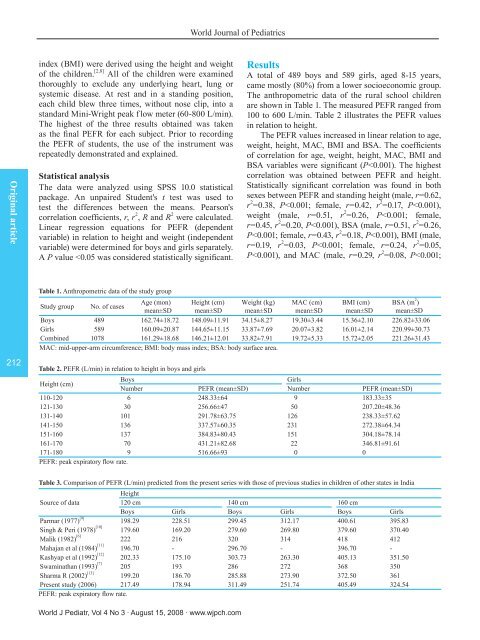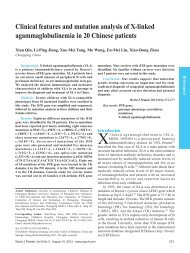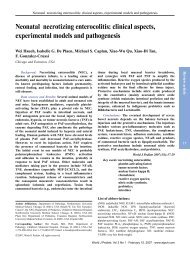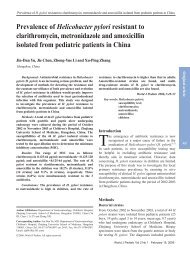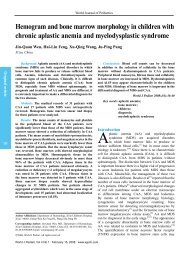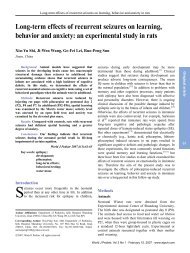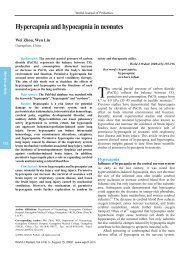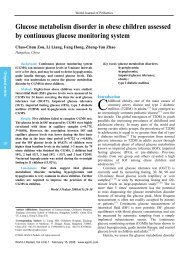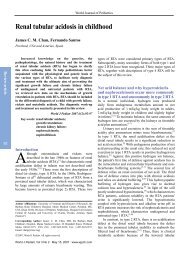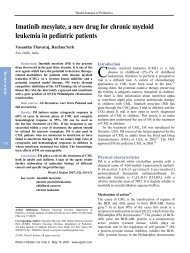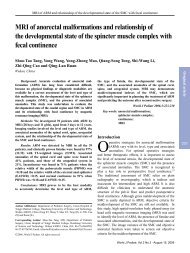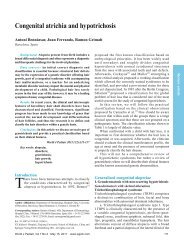Peak expiratory f low rate of rural school children from Wardha ...
Peak expiratory f low rate of rural school children from Wardha ...
Peak expiratory f low rate of rural school children from Wardha ...
You also want an ePaper? Increase the reach of your titles
YUMPU automatically turns print PDFs into web optimized ePapers that Google loves.
Original article<br />
212<br />
index (BMI) were derived using the height and weight<br />
<strong>of</strong> the <strong>children</strong>. [2,8] All <strong>of</strong> the <strong>children</strong> were examined<br />
thoroughly to exclude any underlying heart, lung or<br />
systemic disease. At rest and in a standing position,<br />
each child blew three times, without nose clip, into a<br />
standard Mini-Wright peak f <strong>low</strong> meter (60-800 L/min).<br />
The highest <strong>of</strong> the three results obtained was taken<br />
as the fi nal PEFR for each subject. Prior to recording<br />
the PEFR <strong>of</strong> students, the use <strong>of</strong> the instrument was<br />
repeatedly demonst<strong>rate</strong>d and explained.<br />
Statistical analysis<br />
The data were analyzed using SPSS 10.0 statistical<br />
package. An unpaired Student's t test was used to<br />
test the differences between the means. Pearson's<br />
correlation coeffi cients, r, r 2 , R and R 2 were calculated.<br />
Linear regression equations for PEFR (dependent<br />
variable) in relation to height and weight (independent<br />
variable) were determined for boys and girls sepa<strong>rate</strong>ly.<br />
A P value


